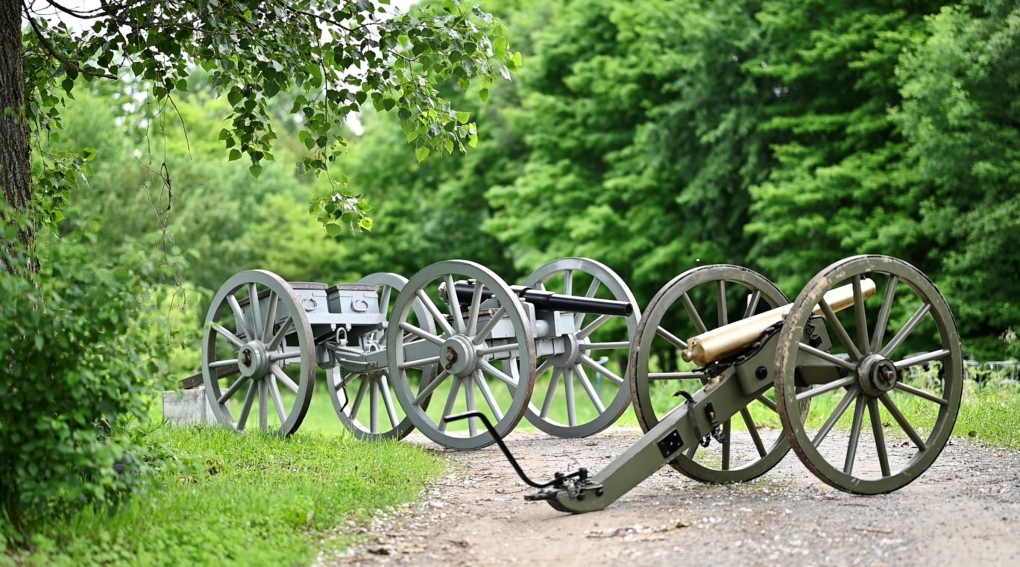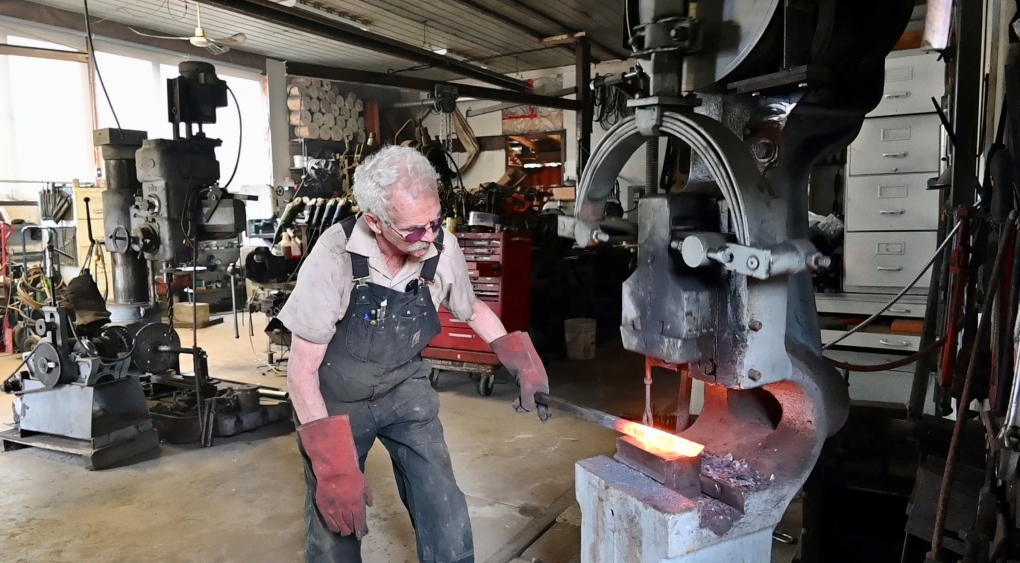A barrel of fun: Life's a blast for this Ontario cannon maker
Tony Walsh has lived in Lanark County’s Watson’s Corners since 1978; a lover of its geography and its people.
“Lanark County is sort of like a land-locked Cape Breton,” he smiles.
“Nice people. Nice area. To me, it’s heaven.”
After a 30-year military career in Canada’s Armed Forces, the former weapons technician and longtime, gifted blacksmith retired to this area.
Or so he thought.
Walsh, now 77, has never been one to put his feet up, or slow down. He’s too busy having a blast, exploring his explosive passion for history.
And cannons.
“As a blacksmith, I started doing metal work and making parts for someone who was selling cannons,” he says.
But when that person went out of business, Walsh got an idea.
“I had a whole bunch of cannon stuff that I had made up, and I thought I’m going to have to sell it. And to sell it, I ended making the entire cannon,” he chuckled.
“And that’s how it started.”
Before long, Walsh was taking orders from across North America. Civil War reenactors and museums wanted cannons.
So did Parks Canada, Signal HIll in Newfoundland, and the Halifax Citadel.
 Walsh’s historically accurate cannons are shipped across North American to museums and reenactor groups. (Joel Haslam/CTV Ottawa)
Walsh’s historically accurate cannons are shipped across North American to museums and reenactor groups. (Joel Haslam/CTV Ottawa)
For forty years, Walsh has been fashioning cannons to the highest specifications, using historic technical drawings and written descriptions from the era.
Gracing his property currently is a six pound breach loading rifle, modelled after a cannon designed by Britain’s Sir William Armstrong in the 1850’s.
“I really enjoy it because I try to duplicate Armstrong’s methods,” says Walsh.
“The man was a genius. The barrel was not one piece. One is shrunk on another, so the inside barrel is five ten thousands of an inch bigger than the hole it’s going in. I can make an Armstrong, from start to finish, in about two months,” he says.
“Just on its own, that’s $22 thousand.”
While most clients don’t launch projectiles from Walsh’s cannons (it’s more about the bang and smoke), his guns are capable of firing.
His confederate mountain rifle is used to fire at targets by reenactor groups in the US.
“It has to be accurate because they fire it live,” he says.
 Tony Walsh uses a power hammer to flatten a bar of steel used in his cannon production. (Joel Haslam/CTV Ottawa)
Tony Walsh uses a power hammer to flatten a bar of steel used in his cannon production. (Joel Haslam/CTV Ottawa)
Antique machinery is vital to production in Walsh’s shop. There’s a century old lathe and a massive power hammer, which saves the blacksmith time and energy when pounding steel.
At 77, Walsh does feel the wear and tear of the job. Building every component, including the large wooden wheels, can be physically taxing.
“Most of the wheels I work with are about five feet tall and weigh about two hundred and fifty pounds, so there’s no way you’re going to toss them around,” he says.
Despite the challenges of the job, seeing his guns work makes it all worthwhile.
“I’m having a ball,” he laughs.
So Tony Walsh’s adventure continues.
“Until I croak,” he smiles.
Seems there’s still lots of fire left in Lanark County’s cannon maker. His retirement will have to wait.
“I want to work to within three days of them shovelling sand in my face.”
CTVNews.ca Top Stories

'Immoral depravity': Two men convicted in case of frozen migrant family in Manitoba
A jury has found two men guilty on human smuggling charges in a case where a family from India froze to death in Manitoba while trying to walk across the Canada-U.S. border.
Canada's tax relief plan: Who gets a cheque?
The Canadian government has unveiled its plans for a sweeping GST/HST pause on select items during the holiday period. The day after the announcement, questions remain on how the whole thing will work.
Quebec man, 81, gets prison sentence after admitting to killing wife with Alzheimer's disease
An 81-year-old Quebec man has been sentenced to prison after admitting to killing his wife with Alzheimer's disease.
Canada Post losses top $300M as strike enters second week -- and rivals step in
Canada Post saw hundreds of millions of dollars drain out of its coffers last quarter, due largely to its dwindling share of the parcels market, while an ongoing strike continues to batter its bottom line.
Nearly 46,000 electric vehicles recalled in Canada over potential power loss
Nearly 46,000 electric vehicles from Kia, Hyundai and Genesis are being recalled in Canada over a potential power loss issue that can increase the risk of a crash.
Pat King found guilty of mischief for role in 'Freedom Convoy'
Pat King, one of the most prominent figures of the 2022 'Freedom Convoy' in Ottawa, has been found guilty on five counts including mischief and disobeying a court order.
Canada issues travel warning after 6 people die from tainted alcohol in Laos
The Canadian government is warning travellers following the deaths of at least six people in the mass poisoning of foreign tourists in Laos after drinking tainted alcohol.
Ground beef tied to U.S. E. coli recall, illnesses wasn't sold in Canada: distributor
At least 15 people have been sickened by E. coli poisoning tied to a recall of potentially tainted ground beef, U.S. federal health officials said. The company tells CTVNews.ca it was not sold in Canada.
Canada's new income tax brackets in 2025: What you need to know
The Canada Revenue Agency has released updated federal income tax brackets for 2025, reflecting adjustments for inflation. Here’s the breakdown.

































